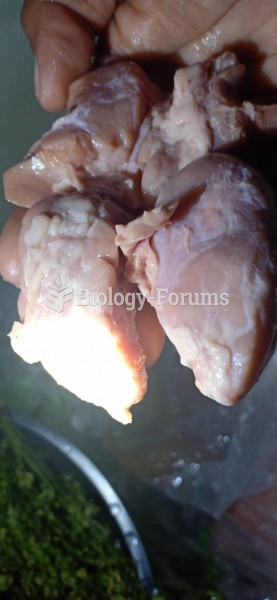|
|
|
Approximately 500,000 babies are born each year in the United States to teenage mothers.
Many medications that are used to treat infertility are injected subcutaneously. This is easy to do using the anterior abdomen as the site of injection but avoiding the area directly around the belly button.
Acute bronchitis is an inflammation of the breathing tubes (bronchi), which causes increased mucus production and other changes. It is usually caused by bacteria or viruses, can be serious in people who have pulmonary or cardiac diseases, and can lead to pneumonia.
In the United States, an estimated 50 million unnecessary antibiotics are prescribed for viral respiratory infections.
There are over 65,000 known species of protozoa. About 10,000 species are parasitic.







